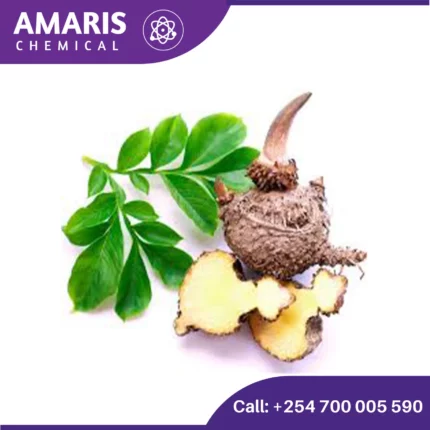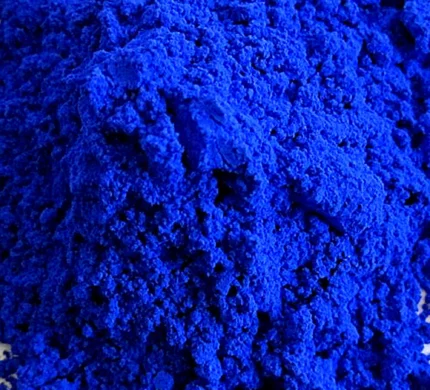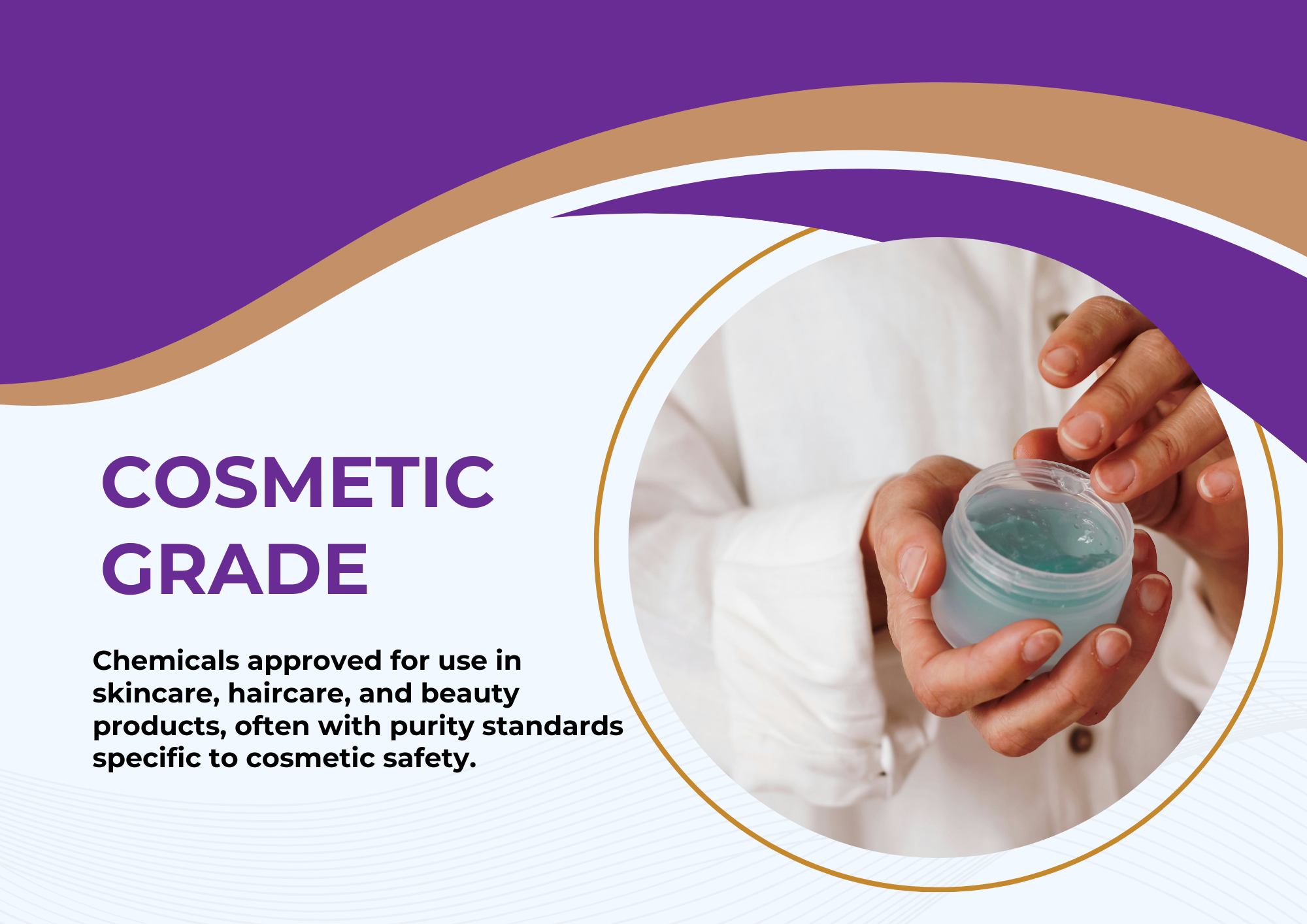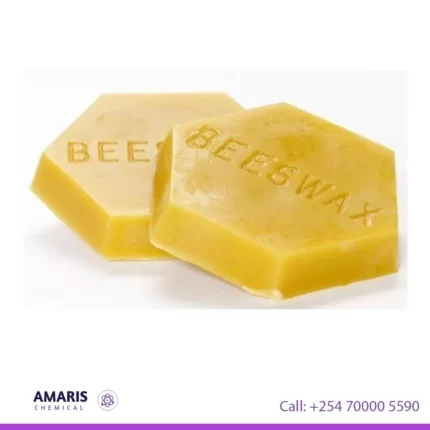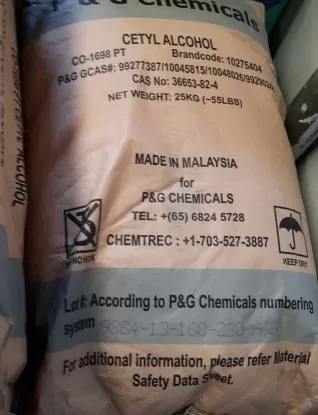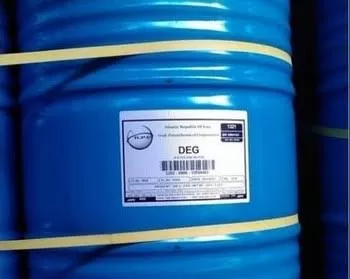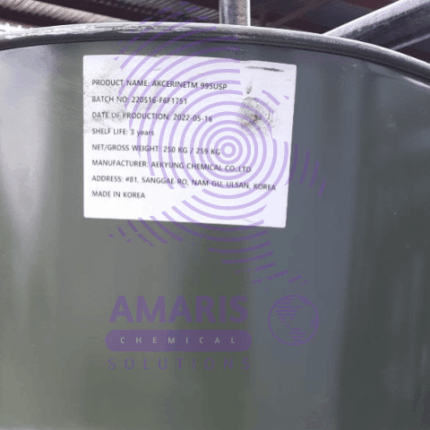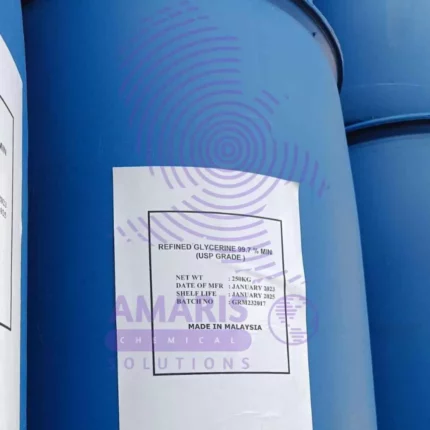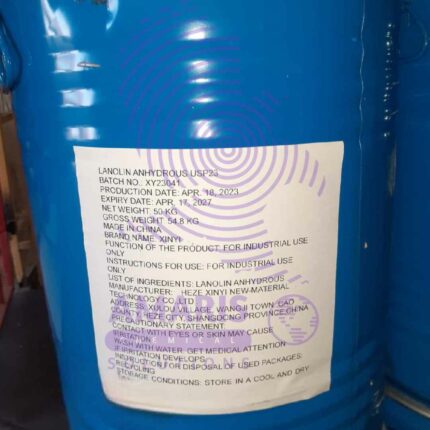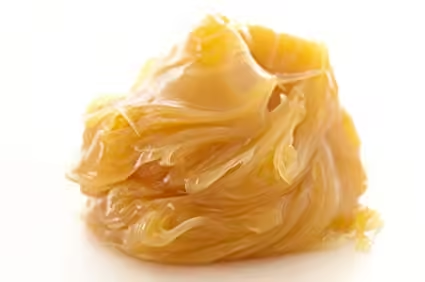Isopropyl Myristate
$0.01
Isopropyl myristate is an ester compound derived from the combination of isopropyl alcohol and myristic acid. It is commonly used in various personal care products, pharmaceuticals, and cosmetics as an emollient, emulsifier, and thickening agent. Isopropyl myristate has excellent spreading and lubricating properties, making it valuable in formulations such as lotions, creams, makeup products, and sunscreens. It helps to enhance the absorption of other ingredients into the skin, provides a smooth and non-greasy feel, and improves the overall texture and stability of the product.
Isopropyl Myristate Uses
Primary Uses of Isopropyl Myristate
1. Cosmetics & Skincare
-
Emollient: Softens and smooths skin by reducing moisture loss.
-
Solubilizer: Helps blend oils and fragrances in lotions, creams, and makeup.
-
Texture Enhancer: Gives a silky, non-greasy feel to products like foundations, lipsticks, and sunscreens.
-
Carrier for Active Ingredients: Improves penetration of drugs and cosmetic actives.
2. Pharmaceuticals & Topical Medications
-
Base for Ointments & Creams: Used in medicated creams (e.g., anti-fungal, analgesic, or steroid formulations).
-
Transdermal Drug Delivery: Enhances absorption of active pharmaceutical ingredients (APIs) through the skin.
-
Lubricant in Medical Devices: Used in some medical gels and lubricants.
3. Hair Care Products
-
Conditioning Agent: Reduces frizz and improves combability in shampoos and conditioners.
-
Anti-static Agent: Prevents static buildup in hair sprays and styling products.
4. Industrial & Manufacturing
-
Lubricant: Used in machinery and metalworking fluids.
-
Plasticizer: Helps improve flexibility in some polymers.
Secondary Uses of Isopropyl Myristate
1. Personal Care & Hygiene
-
Shaving Creams & Aftershaves: Provides a smooth glide and moisturizing effect.
-
Deodorants & Antiperspirants: Helps active ingredients spread evenly.
-
Massage Oils: Used as a lightweight, non-sticky oil base.
2. Niche Applications
-
Pigment Wetting Agent: Helps disperse colorants in makeup and paints.
-
Leather & Textile Conditioner: Used in some leather polishes and fabric softeners.
-
Food-Grade Lubricant: Occasionally used in food processing equipment (must meet purity standards).
3. Household Products
-
Polish & Wax Additive: Adds shine to car waxes and furniture polishes.
-
Stain Remover: Helps break down oily residues in some cleaning formulations.
| APPEARANCE |
Watery/Thin – Low viscosity e.g., ethanol |
|---|---|
| AVAILABLE PACK SIZE |
5 Litres (Plastic bottle) |
- Basic Identification Attributes
- Chemical Name: Isopropyl tetradecanoate (IUPAC)
- CAS Number: 110-27-0
- HS Code: 2915.90.70 (Esters of other inorganic acids)
- Molecular Formula: C₁₇H₃₄O₂
- Synonyms: IPM, tetradecanoic acid isopropyl ester, myristic acid isopropyl ester
- Physical & Chemical Properties
- Physical State: Clear, colorless to pale yellow oily liquid
- Color & Odor: Colorless to faint yellow; mild, characteristic odor
- Boiling Point: 192-195°C (10 mmHg) | 160°C (1 mmHg)
- Melting Point: 3-5°C
- Density: 0.85-0.86 g/cm³ (20°C)
- Solubility:
- Insoluble in water
- Miscible with ethanol, ether, chloroform, and most organic solvents
- pH Level: Neutral (~7)
- Vapor Pressure: Low (negligible at room temperature)
- Flash Point: 110°C (closed cup) – Combustible but not highly flammable
- Autoignition Temperature: ~350°C
- Viscosity: ~5-7 mPa·s (20°C)
- Safety & Hazard Attributes
- Hazard Class (GHS):
- Not classified as hazardous (non-toxic, non-irritating at typical use levels)
- NFPA Ratings:
- Health: 0 | Flammability: 1 | Reactivity: 0
- Exposure Limits:
- No OSHA PEL or ACGIH TLV established
- Reactivity:
- Stable under normal conditions
- Avoid strong oxidizers (e.g., peroxides, nitric acid)
- Storage & Handling Attributes
- Storage Conditions:
- Store in a cool, dry place (<30°C) away from direct sunlight
- Keep containers tightly sealed to prevent moisture absorption
- Incompatible Materials: Strong oxidizing agents
- Container Type:
- Plastic (HDPE) or stainless steel; glass for small quantities
- Shelf Life: 2+ years if stored properly
- Special Handling:
- Minimal PPE required (gloves, goggles for prolonged handling)
- Regulatory & Compliance Attributes
- Regulatory Status:
- FDA: Approved as indirect food additive (21 CFR 178.3910)
- EU: Compliant with REACH, Cosmetics Regulation (EC 1223/2009)
- EPA: Listed under TSCA inventory
- Hazard Symbols (GHS): None required (non-hazardous)
- Transportation Restrictions:
- Not regulated as hazardous for transport (non-flammable)
- Waste Disposal:
- Dispose as non-hazardous waste or incinerate
- Environmental & Health Impact
- Ecotoxicity:
- Low toxicity to aquatic life (LC50 >100 mg/L for fish)
- Persistence:
- Readily biodegradable (>60% in 28 days per OECD 301)
- Carcinogenicity:
- Not classified by IARC, NTP, or OSHA
- Biodegradability:
- Readily biodegradable (OECD 301B)
Personal Protection:
- Gloves:Wear nitrile or latex gloves to prevent skin contact (though IPM is low-risk, prolonged exposure may cause mild irritation).
- Eye Protection:Safety goggles if splashing is possible.
- Clothing:Lab coat or protective apron if handling large quantities.
- Respiratory Protection:Not usually required unless in mist or aerosol form (use a dust mask if handling powder blends).
Handling & Storage:
- Ventilation:Normal room ventilation is sufficient; no special fume hood needed.
- Ignition Sources:Combustible at high temperatures—keep away from open flames, sparks, and hot surfaces.
- Storage:Store in a cool, dry place in tightly sealed containers (preferably plastic or glass).
- Incompatibilities:Avoid strong oxidizing agents (e.g., peroxides, nitric acid).
Spill Management:
- Small spills:Wipe up with absorbent material (e.g., paper towels, spill pads).
- Large spills:Contain with inert absorbents (e.g., sand, vermiculite) and dispose of properly.
Inhalation:
- Symptoms:Unlikely to cause harm at room temperature (low volatility). If heated mist is inhaled, may cause mild respiratory irritation.
- Action:Move to fresh air. Seek medical attention if irritation persists.
Skin Contact:
- Symptoms:Generally non-irritating, but prolonged exposure may cause mild dryness.
- Action:Wash with soap and water. Apply moisturizer if needed.
Eye Contact:
- Symptoms:May cause slight irritation, redness.
- Action:Rinse gently with lukewarm water for 15 minutes. Seek medical help if irritation continues.
Ingestion:
- Symptoms:Low toxicity, but may cause mild gastrointestinal discomfort.
- Action:Rinse mouth with water. Drink water if swallowed. Seek medical advice if large amounts are ingested.
Fire Hazards:
- Combustible but not highly flammable(Flash point: ~130°C / 266°F).
- Burns when exposed to high heat, producing carbon monoxide (CO) and carbon dioxide (CO₂).
Extinguishing Methods:
- Small fires:Use dry chemical (ABC), CO₂, or foam extinguishers.
- Large fires:Use water spray, fog, or alcohol-resistant foam.
- DO NOT use water jet(can spread burning liquid).
Special Precautions:
- Firefighters should wear self-contained breathing apparatus (SCBA)if heavy smoke is present.
- Cool containers exposed to fire with water spray to prevent rupture.


 Emollients
Emollients Humectants
Humectants UV Filters
UV Filters Surfactants (cosmetic)
Surfactants (cosmetic) Preservatives (cosmetic)
Preservatives (cosmetic) Fragrances and Essential Oils
Fragrances and Essential Oils Antioxidants (cosmetics)
Antioxidants (cosmetics)
 Solvents (lab)
Solvents (lab) Chromatography Chemicals
Chromatography Chemicals Microbiology and Cell Culture Reagents
Microbiology and Cell Culture Reagents Biochemical Reagents
Biochemical Reagents Inorganic and Organic Standards
Inorganic and Organic Standards LABORATORY EQUIPMENT & APPARATUS
LABORATORY EQUIPMENT & APPARATUS Spectroscopy Reagents
Spectroscopy Reagents Molecular Biology Reagents
Molecular Biology Reagents
 Precious Metal Extraction Agents
Precious Metal Extraction Agents
 Plasticizers
Plasticizers Polymerization Initiators
Polymerization Initiators Stabilizers
Stabilizers Monomers
Monomers Fillers and Reinforcements
Fillers and Reinforcements Antioxidants (plastics)
Antioxidants (plastics) Colorants (plastic pigments,Dyes)
Colorants (plastic pigments,Dyes)
 Fertilizers
Fertilizers Plant Growth Regulators
Plant Growth Regulators Soil Conditioners
Soil Conditioners Animal Feed Additives
Animal Feed Additives Biostimulants
Biostimulants
 Dough Conditioners
Dough Conditioners Flour Treatments
Flour Treatments Fat Replacers
Fat Replacers Preservatives (baking)
Preservatives (baking)
 Surfactants (cleaning)
Surfactants (cleaning) Builders
Builders Bleaching Agents
Bleaching Agents Enzymes
Enzymes Solvents (cleaning)
Solvents (cleaning) Fragrances
Fragrances Disinfectant
Disinfectant Metal cleaning
Metal cleaning
 Binders/Resins
Binders/Resins Pigments
Pigments Solvents (paint)
Solvents (paint) Additives
Additives Driers
Driers Anti-Corrosion Agents
Anti-Corrosion Agents Specialty Coatings
Specialty Coatings Functional Coatings
Functional Coatings Application-Specific Coatings
Application-Specific Coatings
 Sealants and Adhesives
Sealants and Adhesives
 Biodegradable Surfactants
Biodegradable Surfactants Bio-based Solvents
Bio-based Solvents Renewable Polymers
Renewable Polymers Carbon Capture Chemicals
Carbon Capture Chemicals Wastewater Treatment Chemicals
Wastewater Treatment Chemicals
 Preservatives (food)
Preservatives (food) Flavor Enhancers
Flavor Enhancers Acidulants
Acidulants Sweeteners
Sweeteners Emulsifiers
Emulsifiers Antioxidants (food)
Antioxidants (food) Colorants (food)
Colorants (food) Nutrient Supplements
Nutrient Supplements Nutraceutical Ingredients
Nutraceutical Ingredients
 Fresh Herbs
Fresh Herbs Whole Spices
Whole Spices Ground Spices
Ground Spices Spice Blends
Spice Blends
 Surfactants(oil)
Surfactants(oil)
 Antibiotics
Antibiotics Active Pharmaceutical Ingredients
Active Pharmaceutical Ingredients Excipients
Excipients Vaccine Adjuvants
Vaccine Adjuvants Nutraceutical Ingredients
Nutraceutical Ingredients Solvents (pharmaceutical)
Solvents (pharmaceutical)
 Automotive chemicals
Automotive chemicals Pyrotechnic Chemicals
Pyrotechnic Chemicals


 Vulcanizing Agents
Vulcanizing Agents Accelerators & Retarders
Accelerators & Retarders Antidegradants
Antidegradants Reinforcing Agents
Reinforcing Agents Plasticizers & Softeners
Plasticizers & Softeners Fillers & Extenders
Fillers & Extenders Blowing Agents
Blowing Agents Adhesion Promoters
Adhesion Promoters
